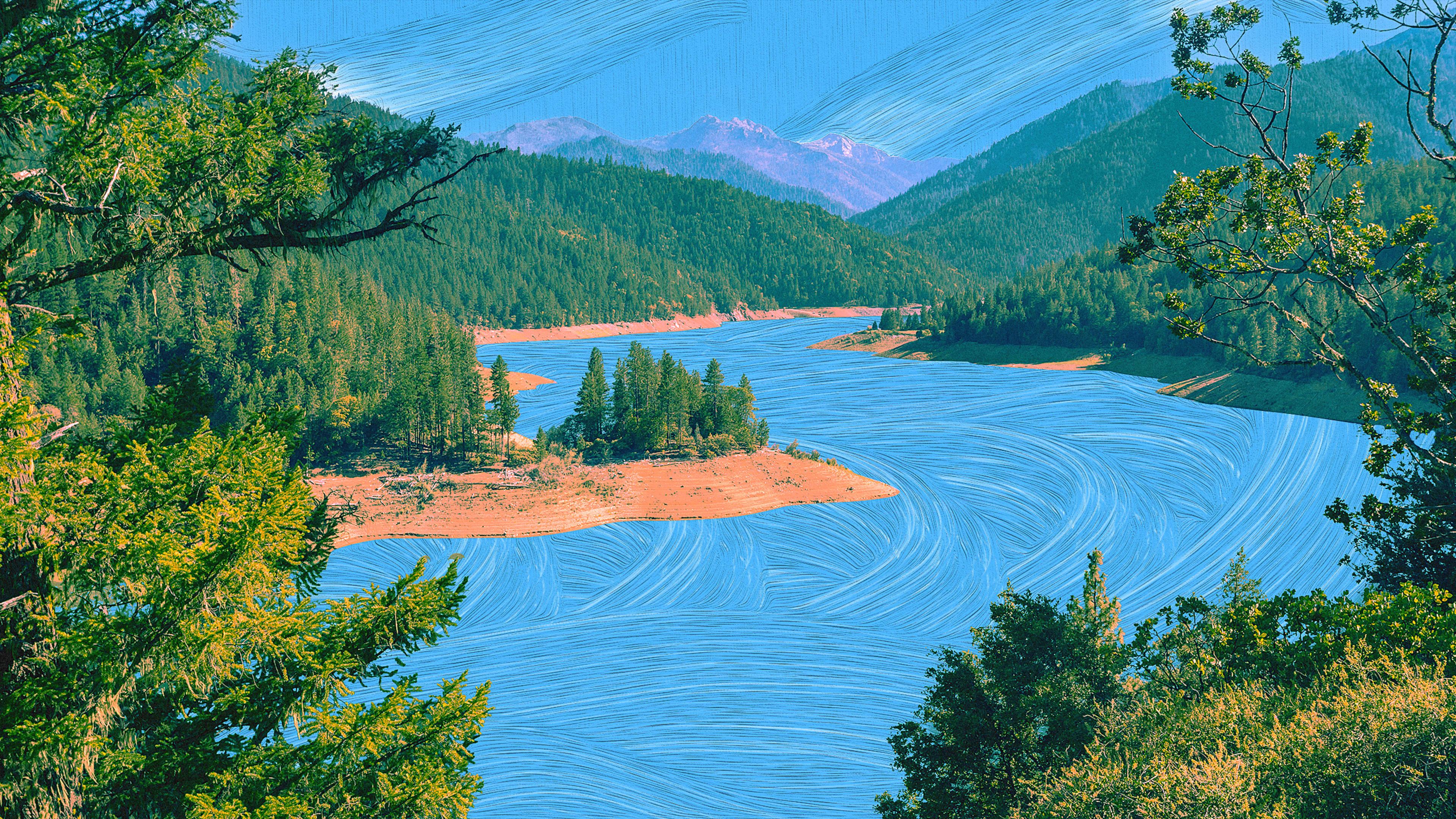If fertilizer runs off a farm in southwestern Montana, it could end up traveling more than 3,400 miles through streams and rivers in North Dakota, South Dakota, Iowa, and Missouri, and then down the Mississippi River to the Gulf of Mexico, where it might end up contributing to a giant algae-filled dead zone. Plastic trash that lands in a stream in West Virginia might make a similarly long journey—around 3,000 miles—to the same place.
[Screen Capture: Samlearner.com]A new map called River Runner lets you trace the long path of water throughout the U.S.: Click on any spot or enter an address, and it will show where the water is likely to flow. Data analyst Sam Learner started working on the project after thinking about how water travels from the Continental Divide. “I though that journey would be really interesting,” he says. “If we start at the top of a mountain on the Continental Divide, just watching this split—one journey a few hundred miles to the Pacific, and another to the Gulf of Mexico. As I started digging into the data, I realized that the scope of it could be much bigger.”
Using data from the United States Geological Survey, and with help from the USGS’s water data team, he mapped the flow path of water from every location in the U.S. Though it illustrates the idea that a drop of rain will follow this path, it’s worth noting that some water might evaporate, or end up in a water treatment plant, or go into groundwater, or otherwise not make the whole journey; Learner is now working on another project that tracks how water is pulled out.
It’s mesmerizing to watch the path of the water as the tool virtually flies along streams and rivers. But it’s also a reminder that pollution in a waterway in one corner of the country isn’t necessarily just a local problem. “What I really hope people take away from the tool, besides a fun visual experience, is just how interconnected our waterways are, and the implications of that in terms of pollutants, agriculture, or water use,” Learner says.
Recognize your brand’s excellence by applying to this year’s Brands That Matter Awards before the early-rate deadline, May 3.
